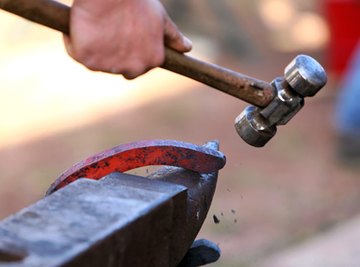
Raw Materials
The making of cast iron begins with a combination of raw materials. Iron is rarely found in its pure form. Only meteorites contain pure iron. The iron in use for centuries is found in the combination of iron and other elements. These combinations are known as iron oxides. Mining pulls most of the iron from iron ores which are rocks found on the outer layers of the earth that contain iron. This iron ore is then converted into various types of iron but first it is processed in a blast furnace to produce pig iron. Used by itself, pig iron has few uses due to its brittle nature. Alloyed with other metals, pig iron takes on new uses.
Making Cast Iron
The term cast iron is generally used to describe grey cast iron, but it can also describe a whole group of alloys too. The surface color of the cast iron is often used to identify it. Cast iron begins its life as pig iron, which is remelted and often combined with large amounts of scrap iron and sometimes with steel. Contaminants are removed from the melted pig iron, and the iron, once melted, is then cast. Casting is the process of pouring the iron into a mold thus giving it a shape. Molds and pouring methods divide this process up. Molds can be made as expendable molds (sand) or non-expendable molds (metal). Pouring can happen via gravity, low-pressure or vacuum. Controlling the pouring process becomes more important the more intricate the mold is.
Solidifying Cast Iron
After the iron is cast, it is allowed to solidify. If performed incorrectly, the solidification process can destroy the effort and the metal is then re-used as scrap metal thus being recycled and living again as pig metal ready for casting. Controlling the cooling curve is very important to good solidification practices and can note the difference between high quality and average cast iron. Quick cooling produces fine grain construction and slow cooling produces coarse grain construction. Cast iron that has not cooled evenly produces a low-quality cast. Other problems faced during the cast iron process include contamination of the iron, gas porosity (the forming of bubbles in the iron), and problems with the fluidity of the metal. The casting process is an art that must be examined and experienced to be fully understood.
About the Author
Alex Burke holds a degree in environmental design and a Master of Arts in information management. She's worked as a licensed interior designer, artist, database administrator and nightclub manager. A perpetual student, Burke writes Web content on a variety of topics, including art, interior design, database design, culture, health and business.
Photo Credits
horse shoe molding image by MLA Photography from Fotolia.com
